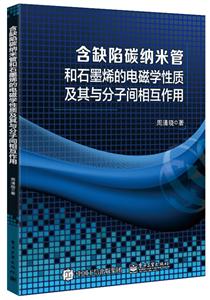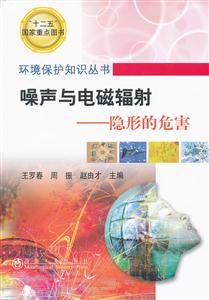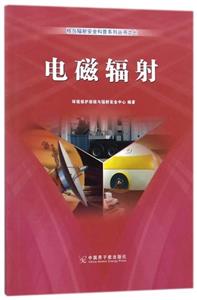
作者:付德君
页数:186页
出版社:科学出版社
出版日期:2018
ISBN:9787030564948
电子书格式:pdf/epub/txt
内容简介
付德君,维贡V.瓦里耶夫,加里W.伯迪克,帕维尔E.皮亚克的《电磁辐射与物质相互作用(英文版)》首先介绍了电磁辐射的基本理论,包括麦克斯韦方程组、德鲁特-洛伦兹电子论和普朗克-爱因斯坦光子理论,阐明电磁辐射与固体相互作用的基本参数的物理意义,并引入等离子体激元、光波导的基本模式。然后引入固体中电子运动行为的波恩-奥本海默近似、单电子近似和描述固体周期性的布洛赫定理,阐明了电磁辐射与固体相互作用引起的各种跃迁机制。
本书特色
首先介绍了电磁辐射的基本理论,包括麦克斯韦方程组、德鲁特-洛伦兹电子论和普朗克-爱因斯坦光子理论,阐明电磁辐射与固体相互作用的基本参数的物理意义,并引入等离子体激元、光波导的基本模式。然后引入固体中电子运动行为的波恩-奥本海默近似、单电子近似和描述固体周期性的布洛赫定理,阐明了电磁辐射与固体相互作用引起的各种跃迁机制。在此基础上,引入了固体的磁光物理性质,包括法拉第旋转、磁圆二向色性(MCD)、磁光克尔
目录
Contents
Foreword
Chapter 1 Electromagnetic Theory of Light 1
1.1 Maxwell’s equations 1
1.2 The wave equation in dielectrics,electromagnetic waves and their properties 3
1.3 Conducting medium and Hagen-Rubens relation 7
1.4 Drude-Lorentz electron theory 10
1.5 Plasma oscillations,waves of electron density in metals-plasmons 13
1.6 Transverse and longitudinal dielectric permittivities for electromagnetic waves in metals and semiconductors 17
1.7 Semi-classical theory of quantization of the electromagnetic field,Planck’s theory of equilibrium radiation 23
1.8 Einstein’s theory of light quanta 27
References 29
Chapter 2 Optical Waveguides 31
2.1 Metallic waveguides,Maxwell’s equations for metallic waveguides 31
2.2 TE-and TM-modes of metallic waveguide.Critical frequency of the waveguide.The group velocity of electromagnetic waves in the metallic waveguide 34
2.3 Fiber-optic light guides.Multi-and single-mode optical fibers.Gradient optical fibers.The “cut-off” frequency of optical fiber 39
2.4 Practical applications of optical waveguides 45
References 57
Chapter 3 Optical Processes in the Solid State 59
3.1 Adiabatic Born-Oppenheimer and single-electron approximation in the solid state 59
3.2 The features of electron motion in the periodic field of the crystal lattice 60
3.3 Bloch theorem and Bloch functions.The reciprocal lattice.The periodicity of the electron energy in the reciprocal lattice space 64
3.4 Nearly free electron model.Bragg diffraction of electrons on the Brillouin zone boundary 71
3.5 “Effective” mass of the electron.The dynamics of an electron in the reciprocal lattice 77
3.6 Interband optical transitions-direct and indirect transitions.Optical phenomena caused by intraband optical transitions 82
References 92
Chapter 4 Magneto-optical Phenomena in the Solid States 94
4.1 Linear magneto-optical effects:Faraday effect,magnetic circular dichroism,magneto-optical Kerr effect.The geometry of their observation.Phenomenological theory of the linear magneto-optical effects 95
4.2 Dynamics of conduction electrons in an external magnetic field,electrical conductivity tensor 104
4.3 Relationship between magneto-optical polar Kerr and Hall effects in the noble metals 108
4.4 The contribution of the intraband electronic transitions in the magneto-optics of the magnetically-ordered metals 114
References 121
Chapter 5 Magneto-optical Effects in the Rare-earth Compounds 123
5.1 Faraday effect microscopic theory elements associated with allowed (in the electric-dipole approximation) optical transitions 129
5.2 Contribution of Van-Vleck “mixing” to the magneto-optics of RE ions in crystals 137
5.3 Optical spectra (absorption,luminescence) of the “forbidden” 4f→4f electric-dipole transitions in RE ions in crystalline hosts 148
5.4 Features of the 4f→4f emission transition magnetooptics in RE compounds 156?
References 163
Chapter 6 Experimental Methods 167
6.1 Experimental methods of solid state optics 167
6.2 Ellipsometry method for determining the optical constants of metals-Drude’s method and its modifications 173
6.3 The Kramers-Kronig relations and their application in the method of the normal reflection of the light 176
6.4 The basics of modern modulation spectroscopy 179
6.5 Studies of the Van Hove singularities in the density of states of metals and semiconductors by optical and modulation spectroscopy methods 181
References 185
Foreword
Chapter 1 Electromagnetic Theory of Light 1
1.1 Maxwell’s equations 1
1.2 The wave equation in dielectrics,electromagnetic waves and their properties 3
1.3 Conducting medium and Hagen-Rubens relation 7
1.4 Drude-Lorentz electron theory 10
1.5 Plasma oscillations,waves of electron density in metals-plasmons 13
1.6 Transverse and longitudinal dielectric permittivities for electromagnetic waves in metals and semiconductors 17
1.7 Semi-classical theory of quantization of the electromagnetic field,Planck’s theory of equilibrium radiation 23
1.8 Einstein’s theory of light quanta 27
References 29
Chapter 2 Optical Waveguides 31
2.1 Metallic waveguides,Maxwell’s equations for metallic waveguides 31
2.2 TE-and TM-modes of metallic waveguide.Critical frequency of the waveguide.The group velocity of electromagnetic waves in the metallic waveguide 34
2.3 Fiber-optic light guides.Multi-and single-mode optical fibers.Gradient optical fibers.The “cut-off” frequency of optical fiber 39
2.4 Practical applications of optical waveguides 45
References 57
Chapter 3 Optical Processes in the Solid State 59
3.1 Adiabatic Born-Oppenheimer and single-electron approximation in the solid state 59
3.2 The features of electron motion in the periodic field of the crystal lattice 60
3.3 Bloch theorem and Bloch functions.The reciprocal lattice.The periodicity of the electron energy in the reciprocal lattice space 64
3.4 Nearly free electron model.Bragg diffraction of electrons on the Brillouin zone boundary 71
3.5 “Effective” mass of the electron.The dynamics of an electron in the reciprocal lattice 77
3.6 Interband optical transitions-direct and indirect transitions.Optical phenomena caused by intraband optical transitions 82
References 92
Chapter 4 Magneto-optical Phenomena in the Solid States 94
4.1 Linear magneto-optical effects:Faraday effect,magnetic circular dichroism,magneto-optical Kerr effect.The geometry of their observation.Phenomenological theory of the linear magneto-optical effects 95
4.2 Dynamics of conduction electrons in an external magnetic field,electrical conductivity tensor 104
4.3 Relationship between magneto-optical polar Kerr and Hall effects in the noble metals 108
4.4 The contribution of the intraband electronic transitions in the magneto-optics of the magnetically-ordered metals 114
References 121
Chapter 5 Magneto-optical Effects in the Rare-earth Compounds 123
5.1 Faraday effect microscopic theory elements associated with allowed (in the electric-dipole approximation) optical transitions 129
5.2 Contribution of Van-Vleck “mixing” to the magneto-optics of RE ions in crystals 137
5.3 Optical spectra (absorption,luminescence) of the “forbidden” 4f→4f electric-dipole transitions in RE ions in crystalline hosts 148
5.4 Features of the 4f→4f emission transition magnetooptics in RE compounds 156?
References 163
Chapter 6 Experimental Methods 167
6.1 Experimental methods of solid state optics 167
6.2 Ellipsometry method for determining the optical constants of metals-Drude’s method and its modifications 173
6.3 The Kramers-Kronig relations and their application in the method of the normal reflection of the light 176
6.4 The basics of modern modulation spectroscopy 179
6.5 Studies of the Van Hove singularities in the density of states of metals and semiconductors by optical and modulation spectroscopy methods 181
References 185















